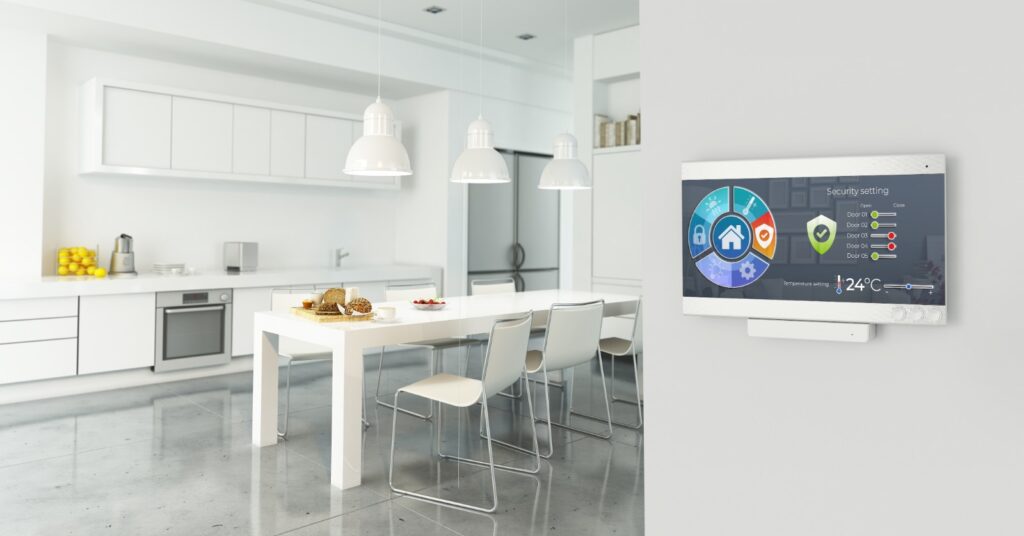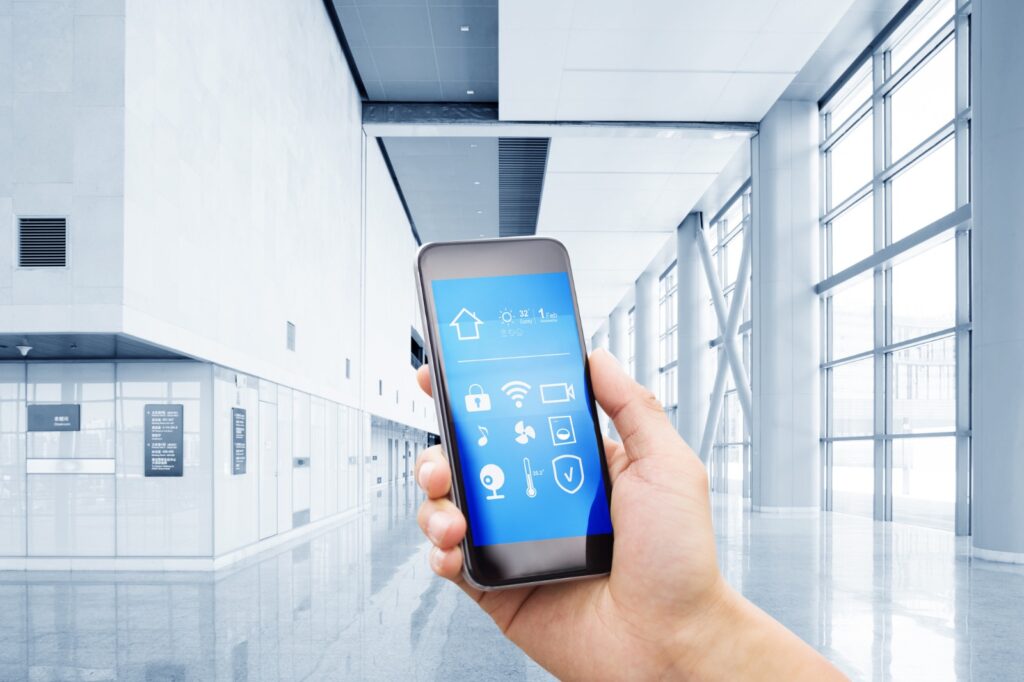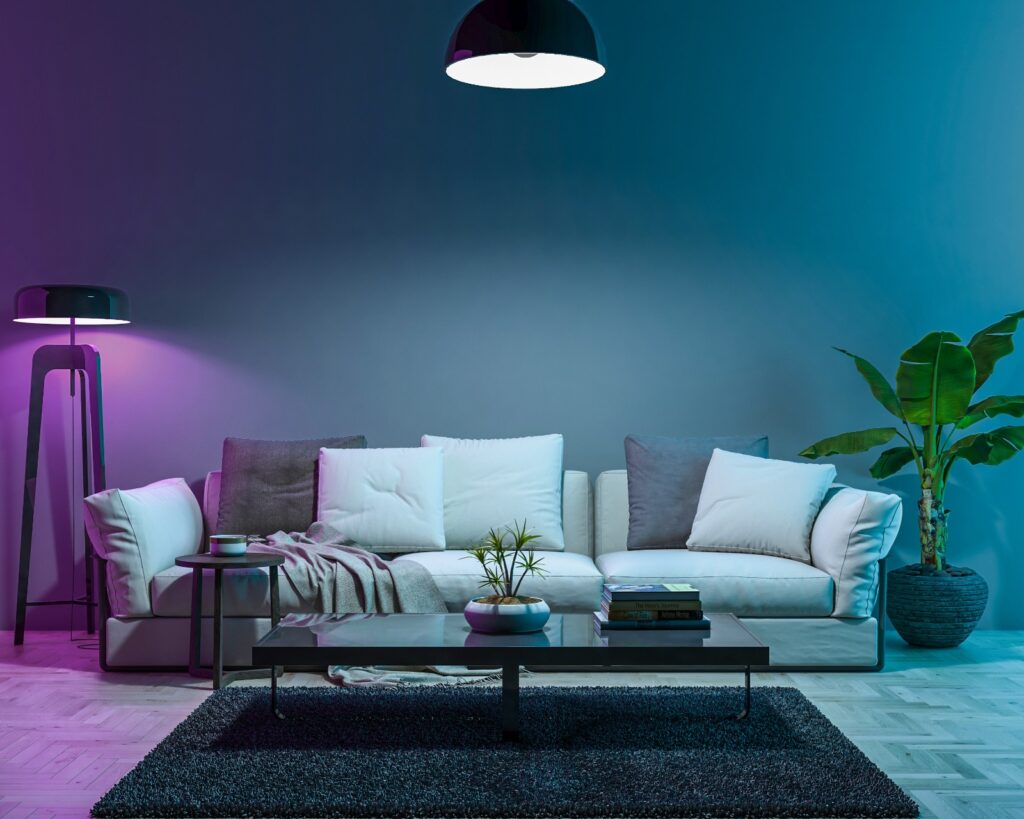
Smart home control centre – IStock Photo
Comfort, intelligence, efficiency, safety and security are synonymous with home automation when it meets architecture. Since its inception, smart technology in home design has enabled centralised management of electronic devices and home appliances. This has been achieved through interconnected and monitored components. Thus the experience of living in these homes has been revolutionised with this new paradigm.
Domotic architecture is aimed at ensuring that users can manage certain aspects of their household with more comfort and flexibility. It represents a blend of technology and design. Moreover, it allows users to significantly improve energy efficiency, safety and comfort in their home. As such, it achieves its purpose of creating a more sustainable environment with an eye to the future.
A recent development

Intelligent control installed in large buildings – IStock Photo
Domotic architecture resulted from a need to resolve the acute oil crisis and insecurity that emerged in the United States of the 1970s.
Initially, this type of technology was largely inaccessible due to its high cost. Consequently, it was mainly installed in large-scale buildings, such as office blocks, hospitals or hotels.
During its expansion and development, leading countries in Asia and Europe opened new doors to an architectural world. Along with these competitive markets there was a widespread growth of computer and robotic technology. In this way, highly innovative buildings and luxury homes were constructed, which also meant considerable energy savings.
Solutions for a new era
Domotic architecture requires an initial investment in specific structures, materials and building solutions. As a result, automated systems can be integrated in homes. The expertise of architects and engineers is essential for providing solutions in this process of building or converting to a smart home.
Data networks, cabling and communication systems are essential in these spaces. They make use of ducts and channels to distribute these cables and communication systems throughout the structure. Accordingly, a multi-channel system interconnects throughout the home.
Any architectural design built with an automated home system requires ventilation and air conditioning to ensure easy living. Moreover, they are specifically designed to be controlled by the automated smart home. For example, this might include adjustable fans and ventilation grilles that open and close automatically to maintain a specific temperature.
Smart glazing is a type of glass that can change its transparency and opacity. This is achieved by applying electrical voltage. As a result, the user can control the room’s natural light along with privacy in a in specific areas of the house.

Empty interior wall in night colour light mode – IStock Photo
Making the most of natural light
Controlling light with LED systems is the most versatile option for automated lighting. The reason is due to their energy efficiency and the way that they can be controlled by colour matching systems. The possibility of creating dynamic lighting effects makes for a sustainable home. Thus, making the most of natural light by programming blinds to open or close is just one of many options available. Therefore, this type of architecture is also related to bioclimatic architecture as it reduces the use of air conditioning, taking advantage of the natural environment.
These exclusive, technological systems are designed to provide greater security. This is what makes a home safer. Smart home systems mean that you can automate the light switches to turn on and off inside your house. This way you can deter potential burglars.
Technological solutions for the home
Technological solutions make use of digital interconnection of everyday objects through internet. Smart speakers have become part of our lives, and by connecting to home automation systems, Alexa, Siri, Google or similar can respond to the demands of occupants. All you have to do is tell them what you want. And then, thanks to the Internet of Things, they will respond to texts or voice mails from a mobile phone.
With these integrated systems it is possible to gauge consumption of each appliance or piece of equipment within the home. These environmentally friendly appliances help you to keep an eye on expenses. High energy consumption in a household not only affects your wallet, but it also has a negative impact on the planet through CO2 emissions and pollution.
Fridges improve energy efficiency by turning off sections especially when they are not in use. Similarly, you can see inside without having to open them. There are also kitchen robots that maintain the same temperature as you cook while monitoring everything from your smartphone.
In short, introducing home automation into architectural design or installing it in an existing home will ensure maximum well-being and comfort for its occupants. In this way technology serves society as domotic architecture is mainly concerned with making buildings more efficient and functional. In addition, this use of smart technologies is revolutionising the architectural landscape. Therefore we look to a more sustainable future, ensuring that our activities will not be so damaging for the planet.

